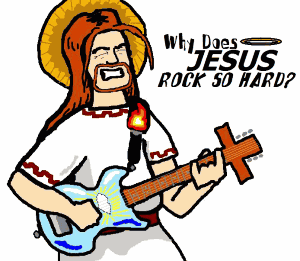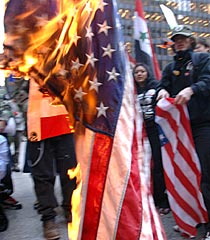It’s possible that I shall make an ass of myself. But in that case one can always get out of it with a little dialectic. I have, of course, so worded my proposition as to be right either way (K.Marx, Letter to F.Engels on the Indian Mutiny)
Tuesday, July 04, 2006
Lord of the Dance
Dance, dance where ever you maybe
For I am the Lord of the Dance said he
Half naked
wrapped in a cloud of extasy
He dances on the street
His shopping cart full of sacred relics
Innu from the north
stripped down in the heat of the south
stripped of all possesions
except those he can carry
stripped of all ego
he dances to the music of the street
unheard by the consumers
who flock past him
possessed
The shaman,
The guru,
The extatic,
lost in the modern world
with his eyes inward
to the the past
to the present
to the future
to the moment
in extasis
A joy
we should
share
celebrate
extol
throw flowers
give gifts
he would not accept
a shiny new car
nor has he anything to teach
he is no guru
no saint
no mystic
except he is
in urban space
the seeing man
for all who are blinded
by capitalism
july 04,06
Find blog posts, photos, events and more off-site about:
shaman, guru, enlightened, homeless, Whyte, WhyteAve, Edmonton, Alberta, poetry, exctasy, extasis, Innu,
Blasphemy

I will survive (Jesus Version)
Very funny but blasphemy none the less. Ain't free speech on the internet grand?!
Find blog posts, photos, events and more off-site about:
jesus, disco, music, video, youtube, blasphamy, vatican, censorship, internet, humour,
Once More On the Fourth

Radgeek once again extols an anarchist version of what American Independence means,
It was an agrarian mechanics rebellion that is forgotten in the Sturm and Drang of American Nationalism.July 4th is the anniversary of the ignominious death of a tyranny, not the birth of a new government. On July 4th, 1776, there was no such thing as the United States of America. The regime under which we live today was not proclaimed until almost a decade later, on September 17, 1787. What was proclaimed on July 4th was not the establishment of a new government, but the dissolution of all political allegiance to the old one. All for the best: a transfer of power from London to Washington is no more worthy of celebration than any other coup d’etat. What is worth celebrating is this:
We hold these truths to be self-evident, that all men are created equal, that they are endowed by their Creator with certain unalienable Rights, that among these are Life, Liberty and the pursuit of Happiness. —That to secure these rights, Governments are instituted among Men, deriving their just powers from the consent of the governed, —That whenever any Form of Government becomes destructive of these ends, it is the Right of the People to alter or to abolish it …. [W]hen a long train of abuses and usurpations, pursuing invariably the same Object evinces a design to reduce them under absolute Despotism, it is their right, it is their duty, to throw off such Government, and to provide new Guards for their future security.
—Declaration of Independence, July 4th, 1776
That is, the revolutionary doctrine that we all, each of us, are the equal of every puffed-up prince and President, that as such you, personally, have every right to refuse the arbitrary orders of tyrants, to ignore their sanctimonious claims of sovereignty, to sever all political connections if you want, and to defend yourself from any usurper who would try to rule you without your consent.
Just as it is forgotten that the first martyr of the revolution was a free black mechanic and sailor.

It would be the mechanics revolt in Boston that touches off the revolution.
Gangs of America by Ted Nace - Chapter 4
Why the Colonists Feared Corporations
In which the citizens of Boston demonstrate the use of the hatchet as an anti-monopoly device (1770-1773)
Shay's Rebellion
Which is why the earliest celebrations of July 4th were not state holidays but a mechanics movement along with protests over changes in their rights as journeymen. It was the core of the Republican poitics of the early 19th Century. It would be the mechanics, including free black sailors and tradesmen, who formed the unions as well as fraternal societies that were populist organizations in America.
Not surprisingly, this consensus proved untenable. As mechanics demanded protection for
their skilled trades, wealthier merchant- manufacturers celebrated the large scale, technologically
advanced operations that threatened to put artisans out of business. In the most insightful chapter
of the book, Peskin examines how mechanic, manufacturer, and manufacturing changed in meaning
between the 1790s and 1820. Terms that had been broadly inclusive of productive labor taking place
in rural households and urban craft workshops became narrow: manufacturing was what took place
in factories, a manufacturer was someone owning a factory, and mechanic lost its association with
craft skill to become a synonym for a factory machinist. Perversely, the Mechanics’ banks that
appeared in the 1800s had little to do with artisan labor, but rather marked the attempt of urban
businessmen to dress a suspicious financial institution in republican garb. By the late 1820s, at “the
high tide of antebellum protectionism” (207), politicians had become the leading advocates of
manufacturing and craft artisans were virtually excluded from the conversation. At precisely the
moment when “the factory system and industrial capitalism were becoming significant in reality as
well as in rhetoric” (218), it became far more difficult to assert that all would share equally in
manufacturing’s bounty. The labor radicalism of the Workingmen’s parties offered one model of
competing class interests, whereas the sectional defiance of Southern nullifiers would offer another.
Peskin observes the continuities between colonial promanufacturing rhetoric of the 1760s and the
Whig party’s American System in the 1830s. But by this later date, mercantilist faith in government’s
ability to create an economy greater than the sum of its parts had “become a bittersweet fantasy, an
attempt to hold on to an increasingly distant past, when harmony and national self-sufficiency
seemed attainable goals” (221). Manufacturing Revolution: The Intellectual Origins of Early American Industry.
One should not forget the importance of the internationalism of the American revolt which inspired both the French and the Haitian revolution. Word of which had spread from Africans in the French colony of New Orleans via free black sailors
who were inculcated with Freemasonry and the enlightenment values of liberty, equality and fraternity, as was the Haitian revolt.

Jim Thomson | The Haitian Revolution and the Forging of America
Many Fraternal Groups Grew From Masonic Seed (Part 1 -- 1730-1860 )
Prince Hall, Freemasonry, and Genealogy
Joe William Trotter - African American Fraternal Organizations
African-Americans in Antebellum Boston
African American Odyssey: Free Blacks in the Antebellum Period ...
Weevils in the Wheat: Free Blacks and the Constitution, 1787-1860
The Revolution's Black Soldiers
Adeleke, Tunde "Violence as an Option for Free Blacks in Nineteenth-Century America"
The Racist Roots of Gun Control
Women in Antebellum America | Pre-Civil War Women | Women in ...
Also See: Happy 4th of July
Plutocrats Rule
American Fairy Tale
Secular Democracy
Slavery in Canada
A NEW AMERICAN REVOLUTION
Find blog posts, photos, events and more off-site about:
Prince-hall, freemasons, fourth0fjuly, july4, independence, african-americans, mechanics, artisans, farmers, revolution, Haiti, America, USA,
CLRJames, Tousaint, libertarian, anarchist, anarchism, liberation, left-libertarian, individualist, collectivist,
Red Moon Rising

On July 2nd the evening moon turned blood red. Yesterday the sunset too was blood red, and the moon returned glowing scarlet. It's July in Edmonton, forest fire season.
Fires to the west of us fires to the east of us, and fires to the north. And it's bloody hot. 33 c yesterday. Record highs, record heat, forest fire season.
It's the season of the blood moon.
Which has more than one meaning.
Find blog posts, photos, events and more off-site about:
red-moon, fores, fire, forest-fire, smoke, eclipse, mensturation, Alberta, B.C., Sask
Happy 4th of July

See My Tribute From Last Year.
Find blog posts, photos, events and more off-site about:
flag, desecration, 4thofJuly, flagburning, US, USA, America, FirstAmendment,
Rothbard, libertarian, left-libertarian, flag-burning, freedom, freedom-of-speech, protest,